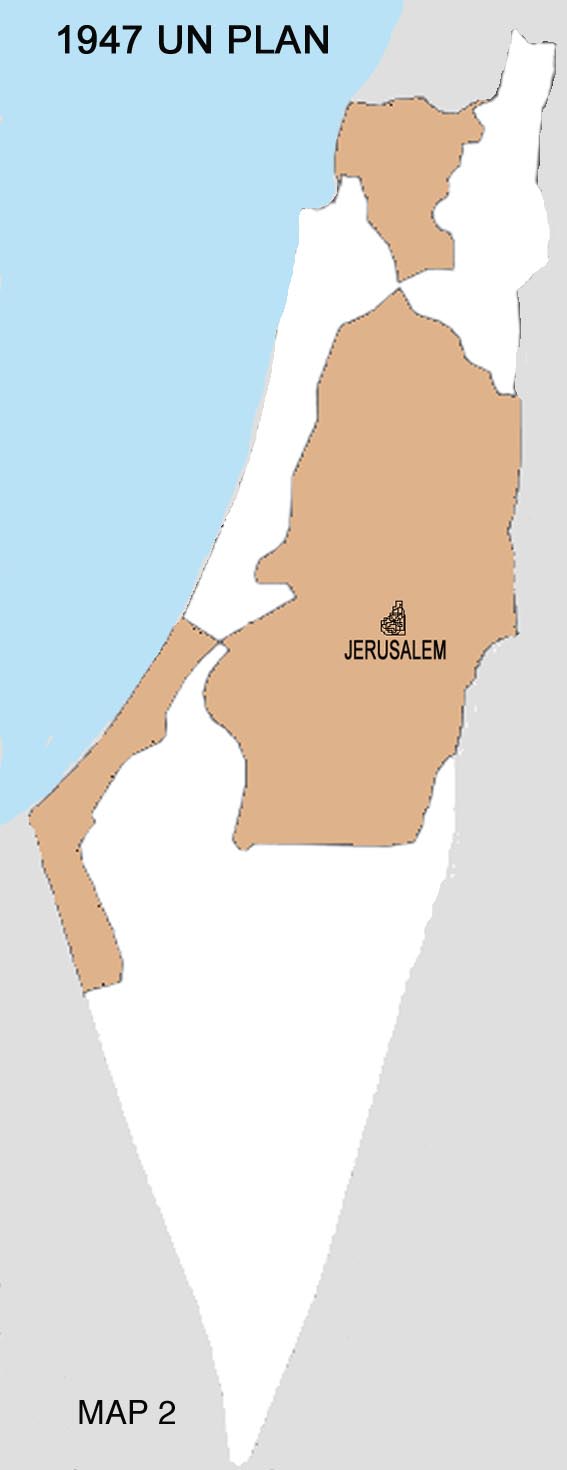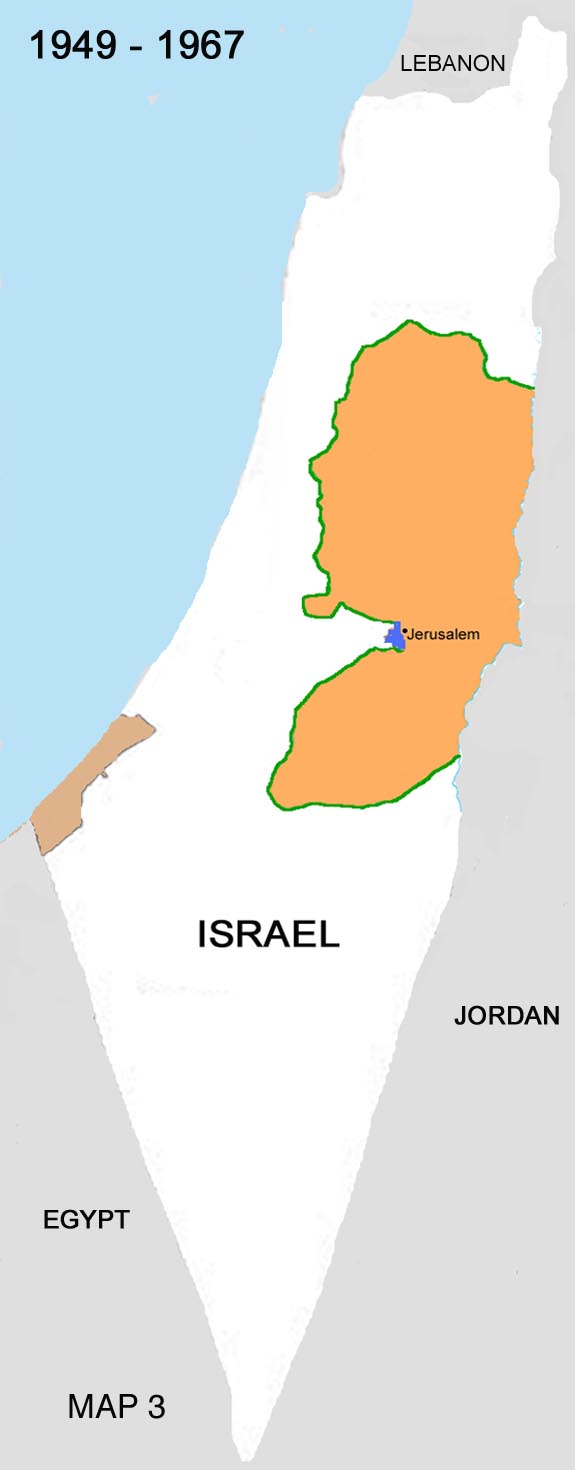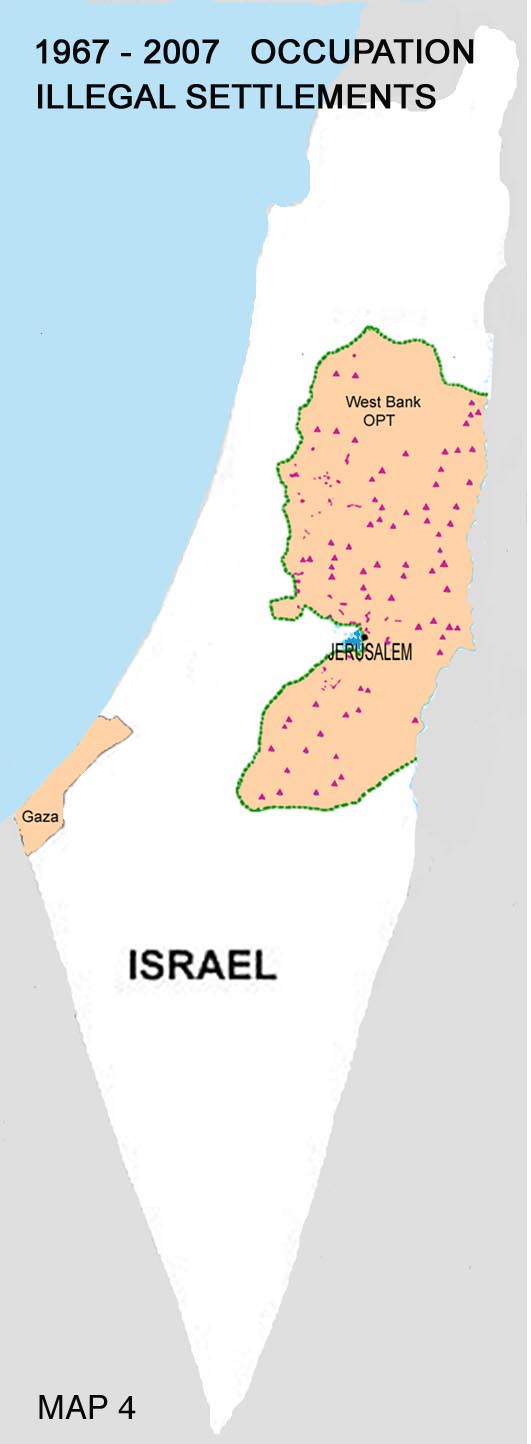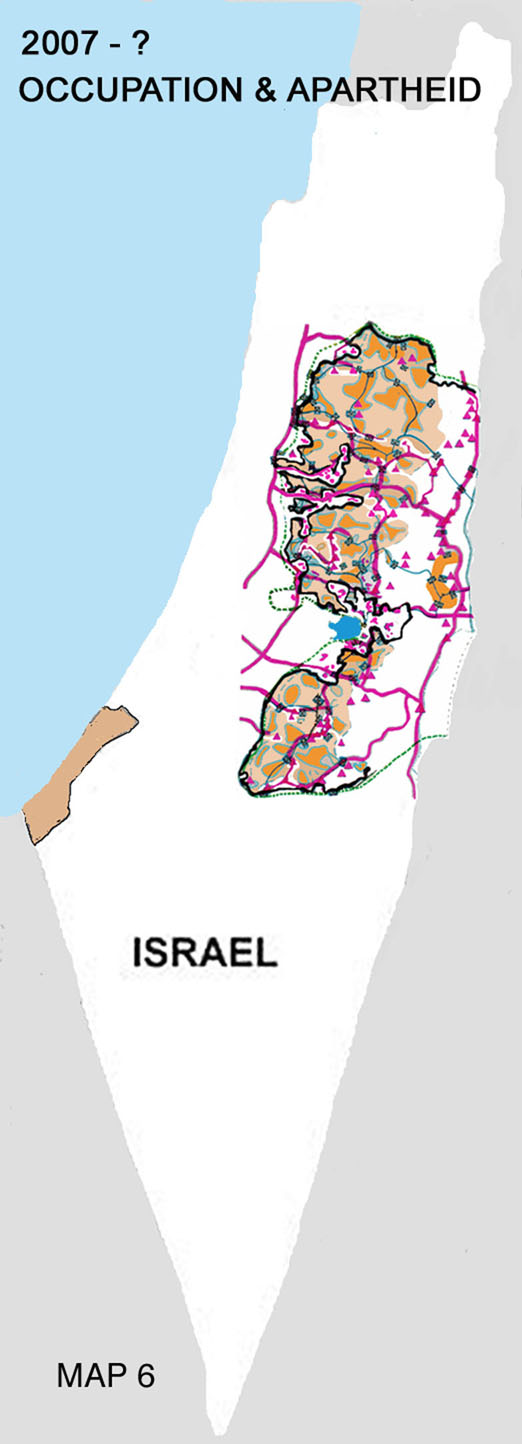
FREE PALESTINE
End Israel's Occupation: 40 years too many
 |
|
 |
|
 |
|
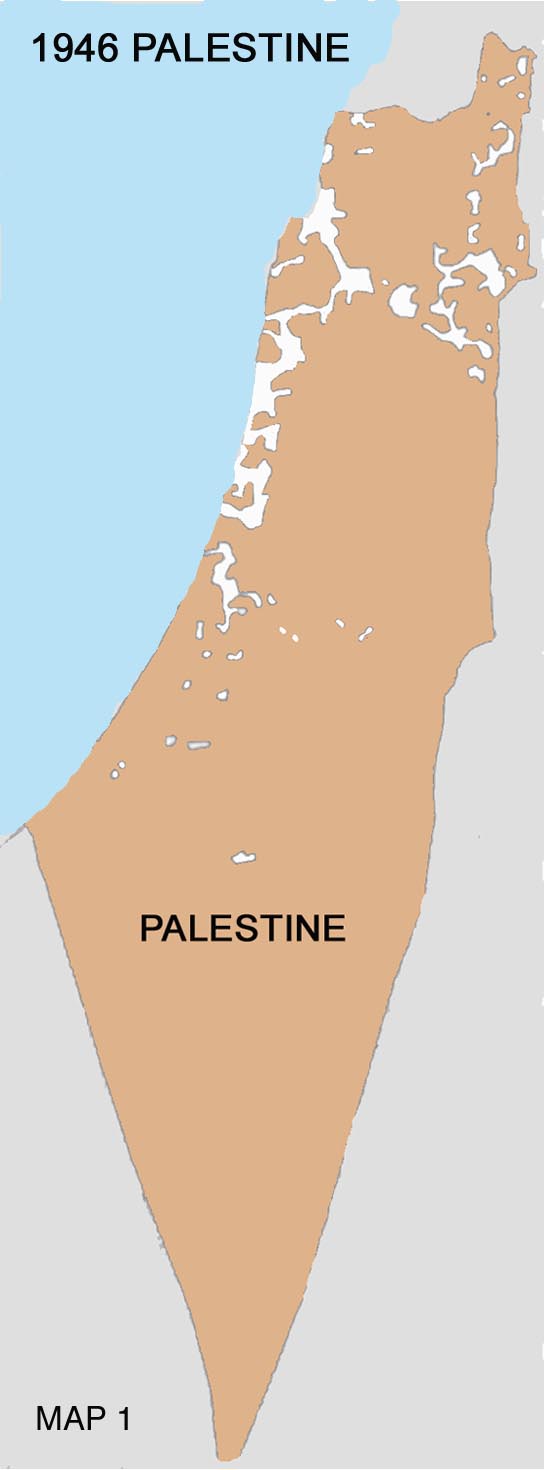 |
MAP 1: MANDATE PALESTINE For the Palestinians, the link to the land of Palestine goes back three millennium: they, along with the Sephardic Jews, are the modern day derivatives of the Cannanite people. Although there was always a small Jewish population – a sustained Jewish kingdom existing for no more than 70 years in antiquity - the European Zionist Jews’ connection to Palestine was largely religious with no direct links to the land. It was the racist anti-Semitic pogroms in Europe that began the Zionist colonial drive for a Jewish homeland in Palestine. Ignored was the fact that Palestine was home to the indigenous Arabs, and that for at least thirteen centuries, Palestine had been universally recognized as an Arab land. For 400 years, it had been part of the Ottoman Empire, but had retained its distinctive regional identity as Palestine with an Arab indigenous population and culture. By the turn of the century, as the Great Powers manoeuvred to establish spheres of influence over the territories of the declining Ottoman Empire, negotiations between Britain, France, Russia and later Italy led to the secret Sykes-Picot agreement. This agreement sought to carve up areas of influence but recognized Arab nationalism’s need for sovereign independent states. The Arabs of Palestine under British Mandate (1917-1947) were given assurances of sovereign independence after the end of the mandate period but this came in direct contradiction to Britain’s 1917 Balfour Declaration promising the Zionist movement, a Jewish homeland in Palestine.The declaration stated that this was not to be done to the detriment of the indigenous Arab population. But by 1947, Britain’s pro-Zionist policies allowing Jewish immigration, had already reduced to two-thirds what was once a 90% majority of the Palestinian Arab population. By the end of the 1930s, the Palestinians were openly rebelling for independence and an end to Jewish migration. This led to the Passfield White Paper which suggested restrictions on Jewish migration and land transfers to contain the growing conflict. The sudden reversal of this policy which had raised hopes of fair play did little to improve the deteriorating situation. With the Nazi persecution of the Jews in Europe, the immigration figures increased sharply exacerbating the mounting tensions, particularly as the Zionist enterprise was not just seeking shelter for the refugees, but had been a sustained settler-colonial effort begun in the nineteenth century. Its goal was to make all of Palestine a Jewish homeland. |
|
 |
© 2007 Women For Palestine
